Installing Waterboard
A few days off in March for the annual pre-Doubleheaders Tour work blitz
Again this year I will be taking part in the annual Doubleheaders Layout Tour, which is coming up this Saturday. It seems to have become a tradition in the week prior to the tour to take some time off and work on the layout, and this year is no exception.
My goal is to get the new waterboard installed and painted. If I have the time, I would also like to make some more progress on the trackwork and prepare a collection of images to display on our portable show display.
So, to that end, I am working on finishing the installation of the new waterboard. “The waterboard” is what I am calling the new surface I am using on the layout where the water scene will be modeled. The first attempt was too small and too low, so I am making a new one.
When I drew up the plans for the replacement waterboard I included pilot holes so I would be certain I was only screwing it to the layout through the ribs. If a screw was inserted in one of the hollowed out pockets it would have warped the surface.
Having the pilot holes spotted made finishing the drilling quick and accurate. A hole in the wrong location will drain the water.
Just kidding. I’m not actually using water.
The holes are countersunk so when installed place I can hide the screw heads under some filler.
I was not happy with this little lump along the edge of the waterboard. When I drew it up it looked ok, but once in place it kind of sticks out, so I decided to route it off.
Using my small laminate trimmer with a straight bit I shaped the edge into a more pleasing shape, freehand. A quick sanding and it looks much better. Will also make it easier to install some banding along the front.
I decided to give the bottom a quick coat of paint to seal it up. Also makes it smoother and less splinterier.
When I initially built the layout, I left about a 1/4″ lip along the water section, to contain the poured resin I will use to model water. This now has to be removed to allow the new waterboard to sit flat onto the layout.
I pondered this for about two weeks. I thought I would sand it off with a belt sander, but this would fill the house with dust and yelling. I decided since Masonite is simply thick paper I would try to cut if off with a utility knife.
Surprisingly, this works. A few passes with a sharp blade and I am able to slice through the Masonite.
Now a word about this piece of shit knife. Sorry for the expletives, but this knife is really a piece of poorly designed crap. Fortunately I found it in the parking lot of Home Depot so I didn’t actually pay for it. I think it was planted there as a joke of some sort. Anyway, this piece of crap knife is incapable of holding onto the blade. The blade release button is strategically placed so a left handed person will frequently release the blade (see image above), therefore rendering it useless.
The thing is, it is a hefty knife. When I found it I thought wow, what a hefty knife, this will be great for cutting the Masonite lip off my layout should I need to replace the waterboard four months from now. How dissapointed I am with this knife.
I have another one, but it is upstairs, and I’m on holidays, so I made this one work. Anyway, enough about the knife.
10 minutes and several knife related expletives later I am half way through the job.
All cut off.
I chipped off a piece of the finish near the end.
I blame that knife.
A bit of glue and it is all patched up. Won’t really be noticeable as the edge of the waterboard will cover it.
I used the belt sander anyway. Not much dust though as I cut most of the material off already, just a light touch up to ensure the surface was nice and flat.
In addition to screws, the waterboard will also be glued in place with some construction adhesive. This stuff is great, glues anything to anything. Permanently.
I left one of my Bronx Terminal cards under the new waterboard. A little note written on the back for whomever tears the layout apart someday. I like to leave little time capsules in all my models.
Waterboard finally being secured in place with lots of screws.
I applied a bead of the same adhesive along the joint of the new waterboard and the layout. This will seal the gap and make the addition permanent.
Since smooth plywood was not available in 5/8″ thickness, I had to use sheeting, which has a rough surface. To smooth everything out I am skimming the surface with a light coat of Durabond 90. This is light, and drys fast, about the same time it takes to update this blog…
All coated and waiting to dry. Maybe I should just model winter, then the job would be done.
Just in time, Vita came in for lunch and a dog cuddle.
Next, sanding the surface, adding an edge band along the waterboard and painting. Will update again when complete.
-T.
On to Next Section….
About the Author:
I'm your host, Tim Warris, a product developer in Port Dover, Ontario. Since March of 2007 I have been documenting the construction of the former CNJ Bronx Terminal in HO scale. For my day job, I design track building tools for Fast Tracks, a small company I own and operate. Fast Tracks makes it fast and easy to hand lay your own trackwork. Stop by our website to learn more!
Posted by: Tim | 03-23-2009 | 01:03 PM
Posted in: Benchwork Construction | Latest Posts
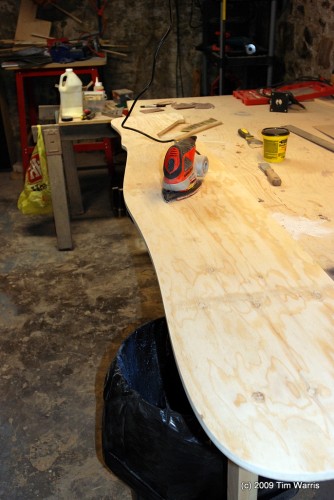
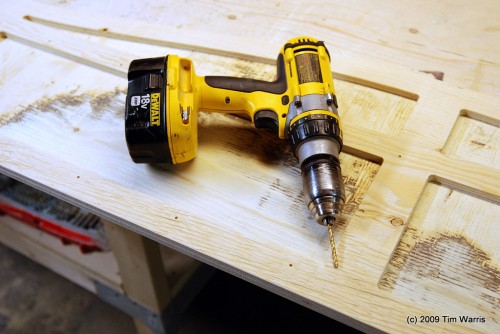
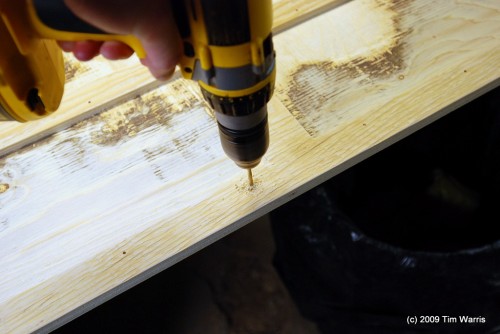
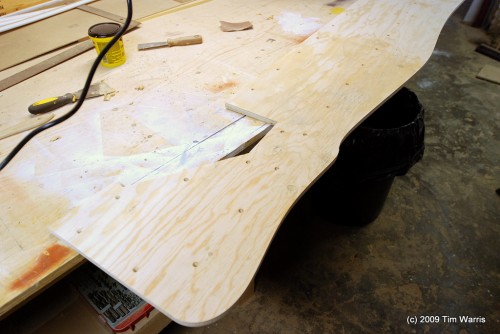
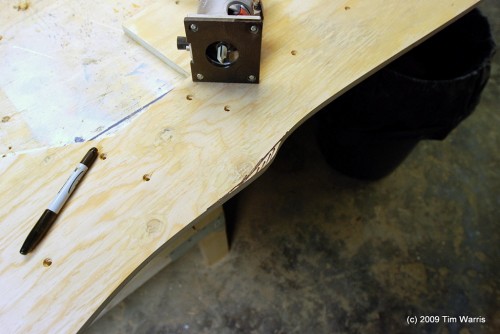
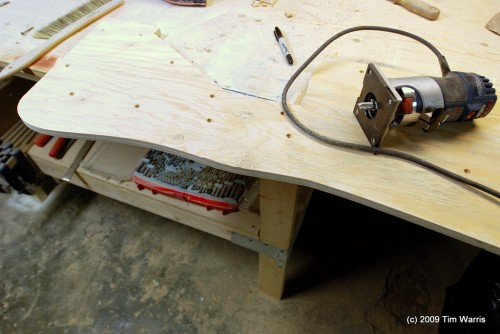
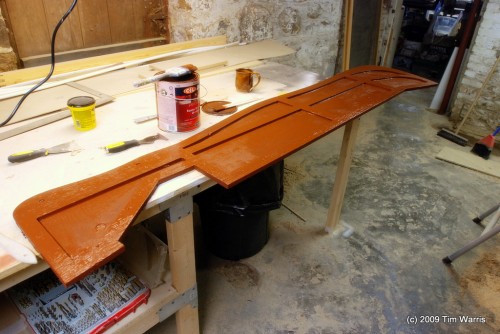
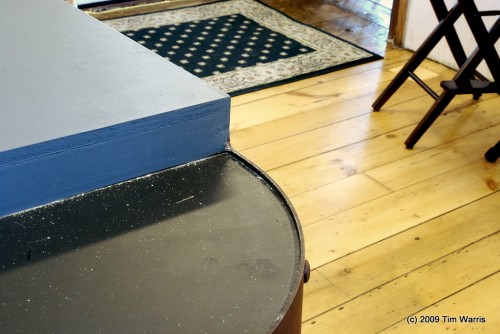
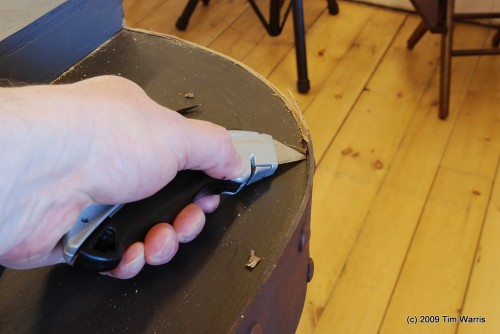
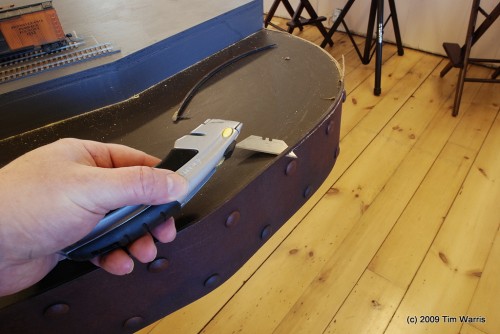
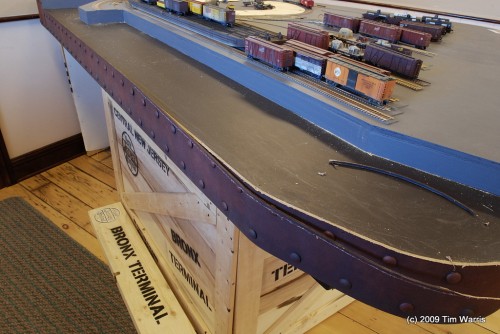
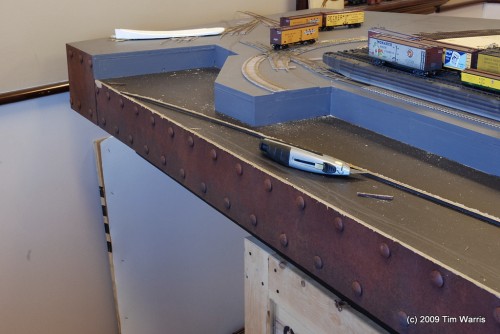
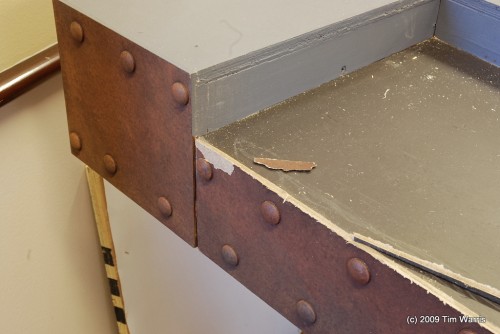
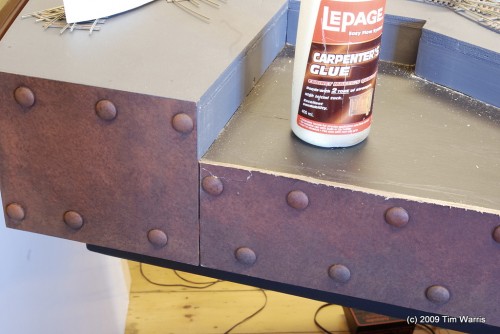
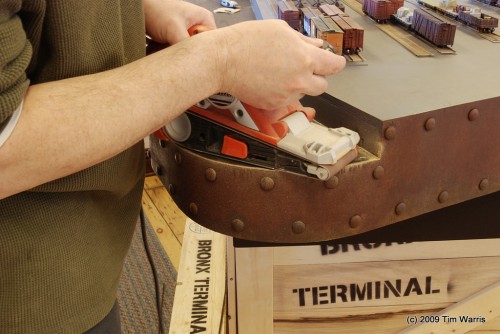
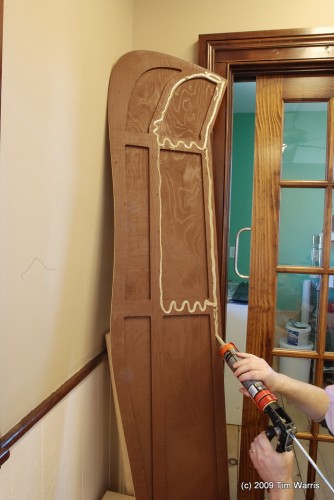
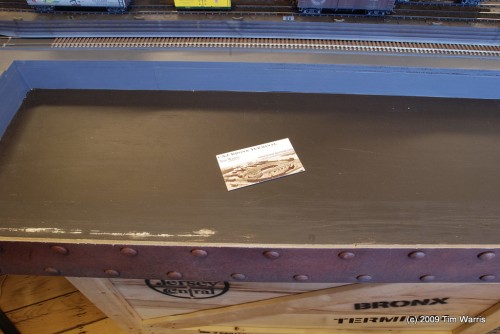
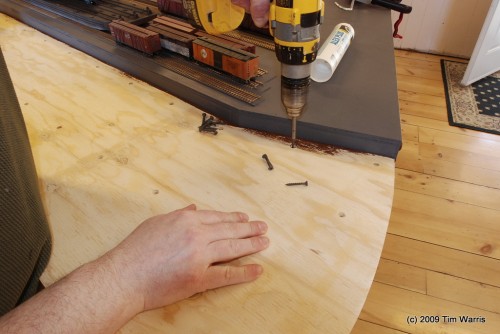
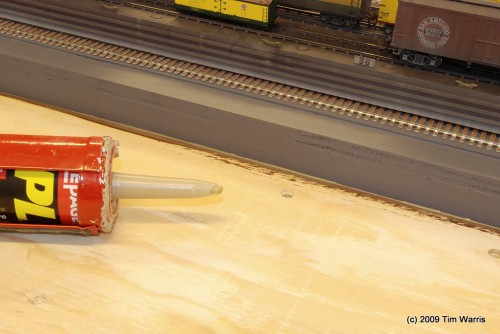
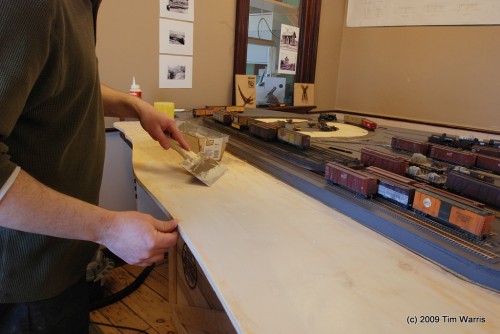
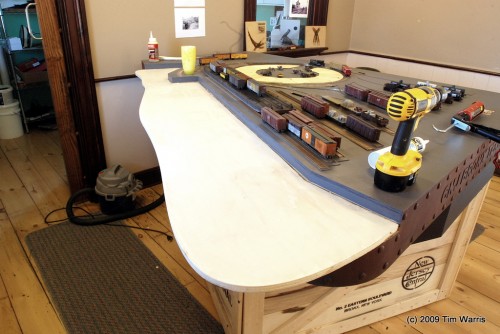
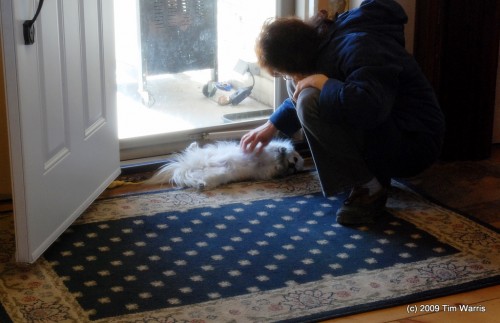
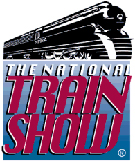
Looking pretty cool. I’m looking forward to seeing it live at the show this weekend!
Jim
Loved the “Tale of the Knife” — too funny! 🙂